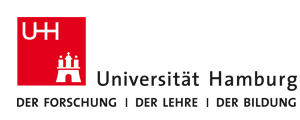| |
Gene Golub SIAM Summer School 2014
Simulation, Optimization, and Identification in Solid Mechanics
|

|
|
4 August - 15 August 2014, Linz, Austria
|
| |
Courses
Goals
The bulk of the summer school consists of the four topics:
-
Identification of material parameters from measurements
(Identification and Inverse Problems, IIP),
-
Material- and topology optimization
(Material optimization/Topology optimization, MO/TO),
-
Optimization subject to variational inequalities
(Mathematical Programming with Complementarity Constraints, MPCC),
-
Adaptive discretization (Adaptive Finite Elements, AFEM).
These topics complement each other in a natural way.
In particular, topics 1 and 2, which will be covered during the first week,
are connected by the following rationale
-
Any model needs identified parameters for reliable simulations
and optimization of structures based upon such models.
-
Material optimization is a natural step beyond simulation.
-
Both, identification and optimization, can be written as minimization
problems subject to the governing material model as a constraint.
-
In both disciplines regularization plays a crucial role.
While in MO regularization is often a direct consequence of design
requirements, a proper choice which would not alter the original
material parameters is much more involved in identification.
-
Despite this similarity, both problems have a different goal
and need some special arguments in their analysis.
To highlight these connections, as well as to show the differences,
both topics will be covered during the first week.
During the second week, the topics 3 and 4 will be covered, as they are
both very relevant extensions of the theory covered during the first week
-
In many practical applications, purely linear elastic material models
may fail to predict the true deformation behavior of a loaded body.
In the worst case this means that structure or component which is
optimized on the basis of a purely linear elastic model may even break.
-
Hence, the incorporation of nonlinear material models, e.g., elastoplasticity,
is mandatory to predict and optimize the behavior of materials outside
of the linear elastic regime.
-
Accurate and efficient solution of the discretized material models
requires adaptivity and error estimation.
Flyer:
G2S3-Summerschool (PDF)
| 
